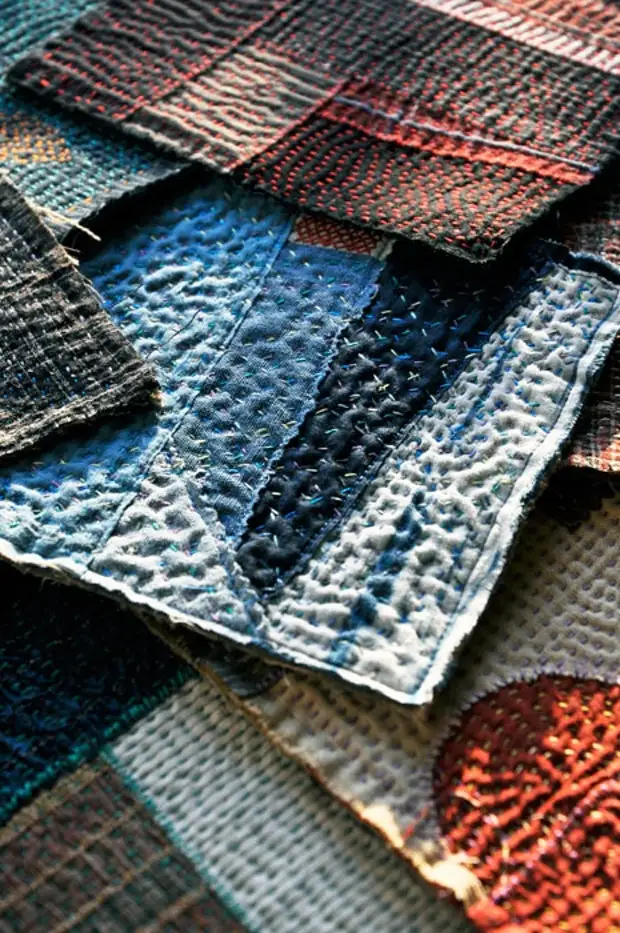
I will share the finds about the types of duct, for those who want to repeat this obstacious texture for themselves.
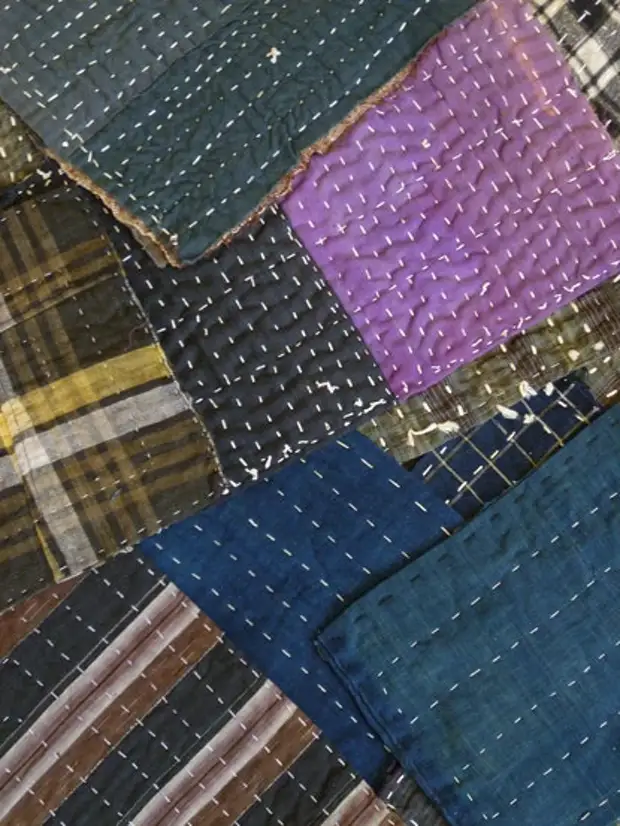
The most common view is a small hand stitch Sashiko. Sashiko means "little blows", the verb Sasu is "piercing". The stitch was used to seal the fabric and compounds of the flap, it attached strength and beauty. The color of the thread varies from white to dark blue.
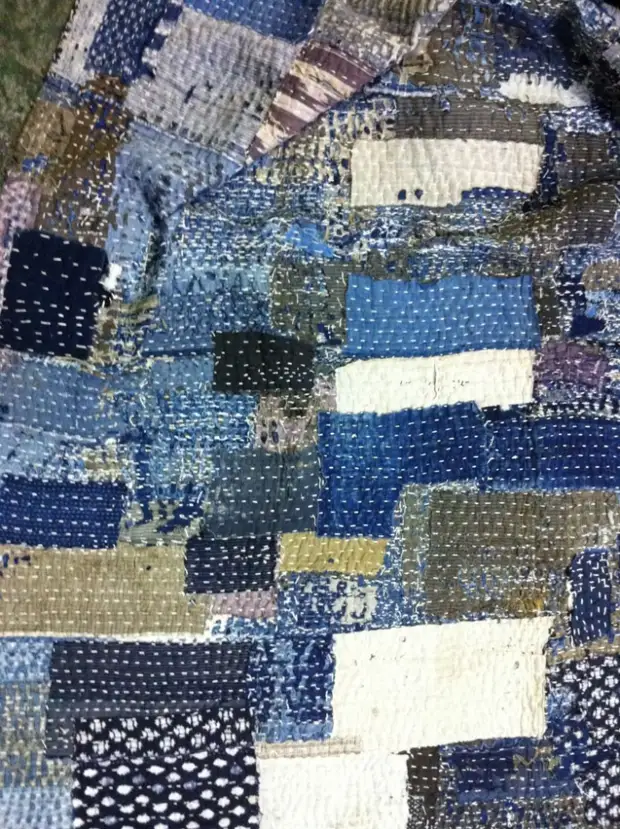
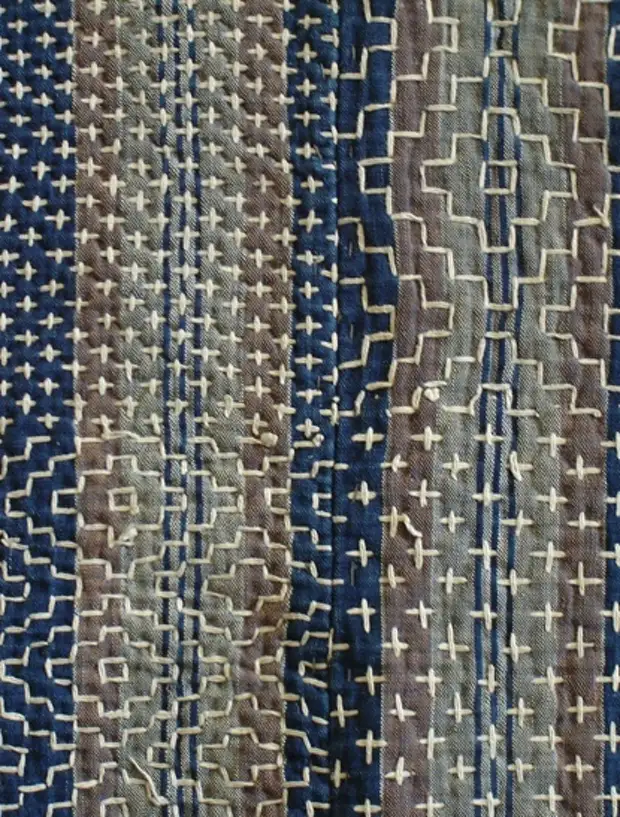
Stitches are drawn through, they must be the same in size and pass. The main rule is never crossing stitches, always leave the distance at the crossroads of the ornament.
The traditional needle for Sashiko is quite long, about 2 inches, the width is uniform over the entire length. Twisted thread without shine. The Japanese use special thimbles from metal or leather. It rushes on the palm right under the middle finger to push the needle through pleated fabric.
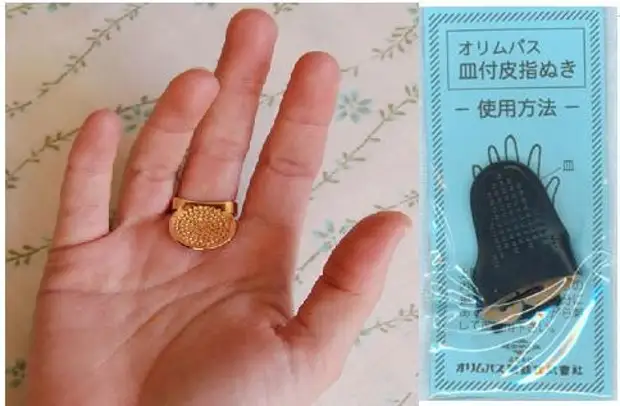
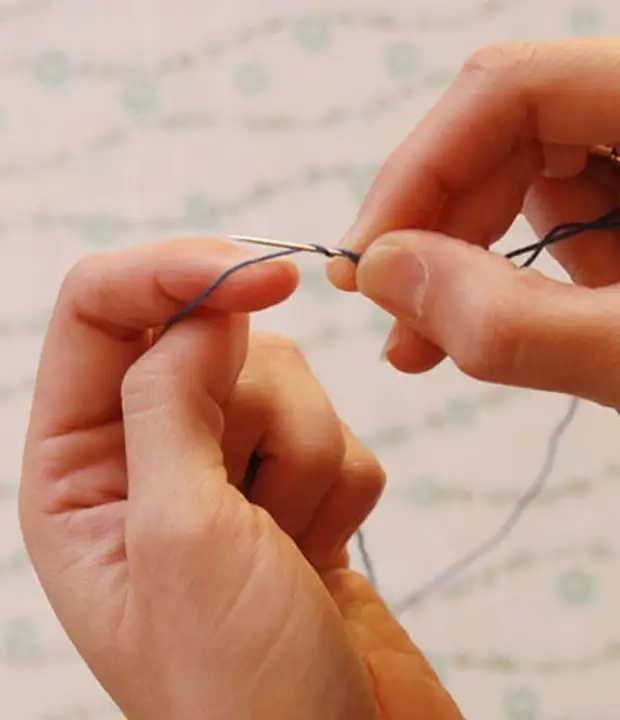
Starting the work you need to cut off the thread of such a length, so that it was enough to perform a series of embroidery moving from one edge of the product to another. Wrapped it twice around the tip of the needle, and then stretching the needle through these spirals, form a quilitules at the end of the thread.
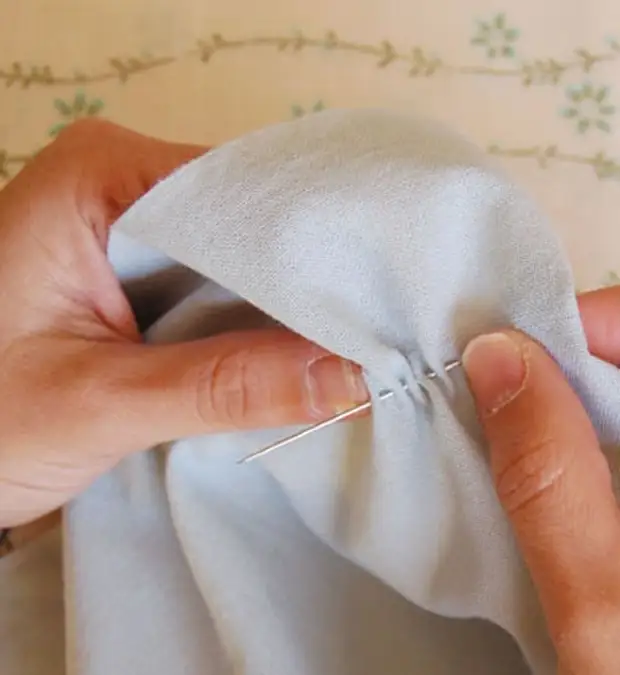
Then take your fabric and strip it on the needle without stretching the thread. After having done an arbitrary, convenient number of stitches for you, push the needle in the thread and stretch the thread.
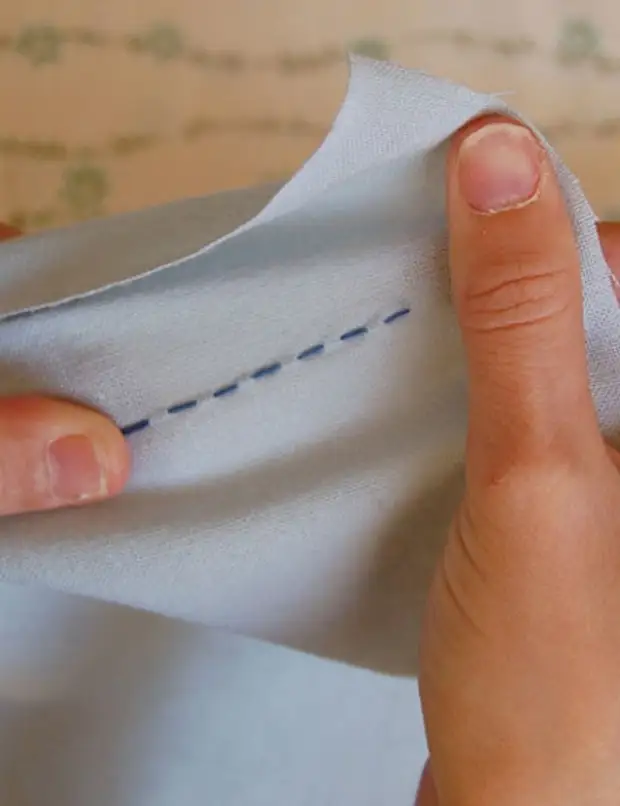
Stretching the thread stretch the fabric in order to weaken the tension of the thread. Continue to perform these operations to the end of the row, and then perform another node, leaving some slack at the end in order to compensate for any tension of the web.
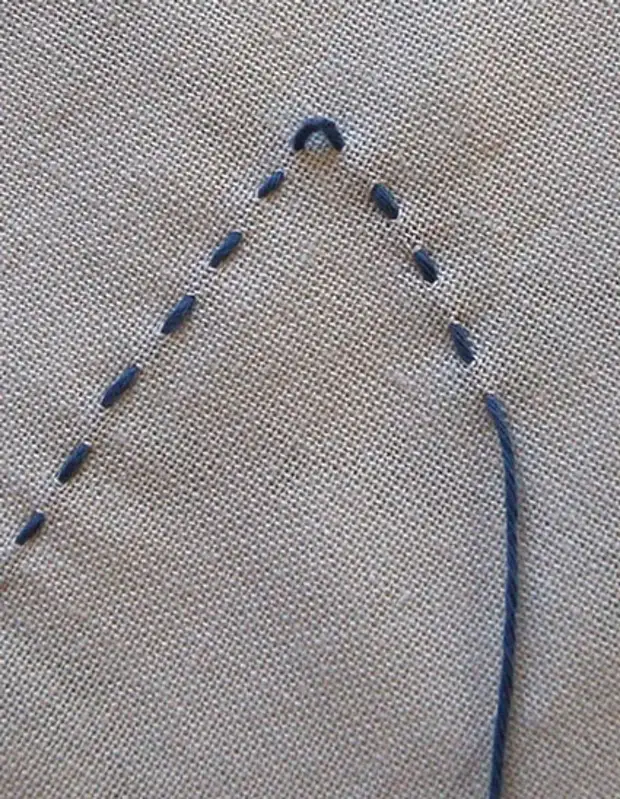
If your pattern requires a change in direction, then at each turn, leave a small loop with the same purpose - weaken the tension.
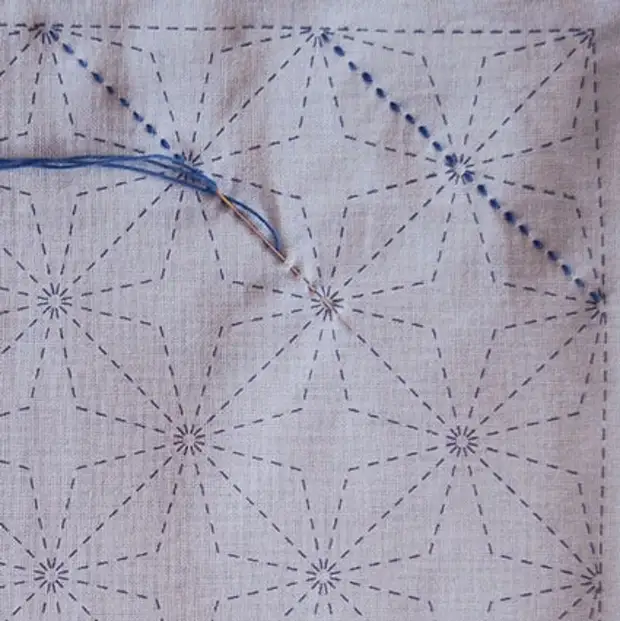
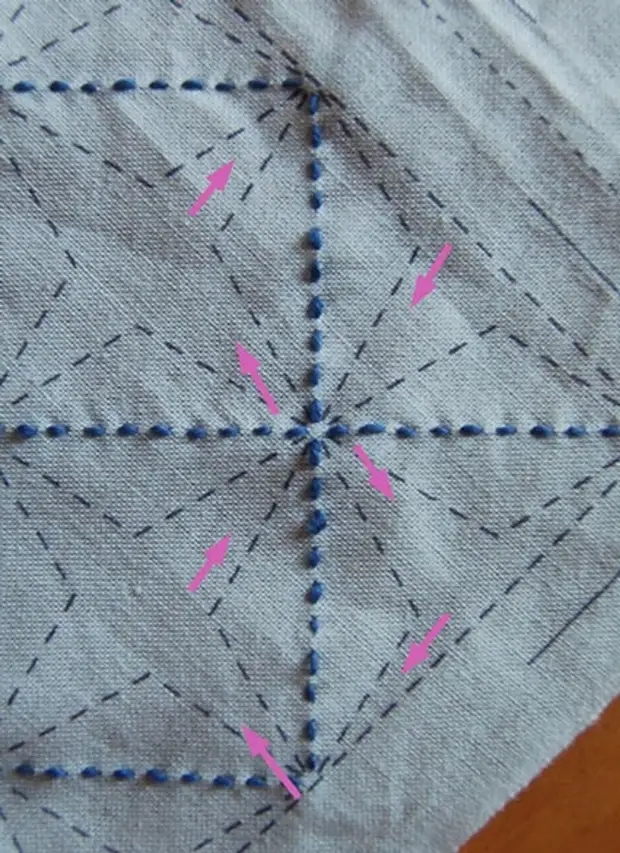
Before starting the stitches, you need to view the pattern carefully and decide on the order of action. It is necessary to know that usually the horizontal and vertical lines are first performed (with the exception of the outer, forming frame), then lay the stitch in the oblique direction and complete it with the execution of the pattern frame. Such an order of actions will save you from possible distortion.
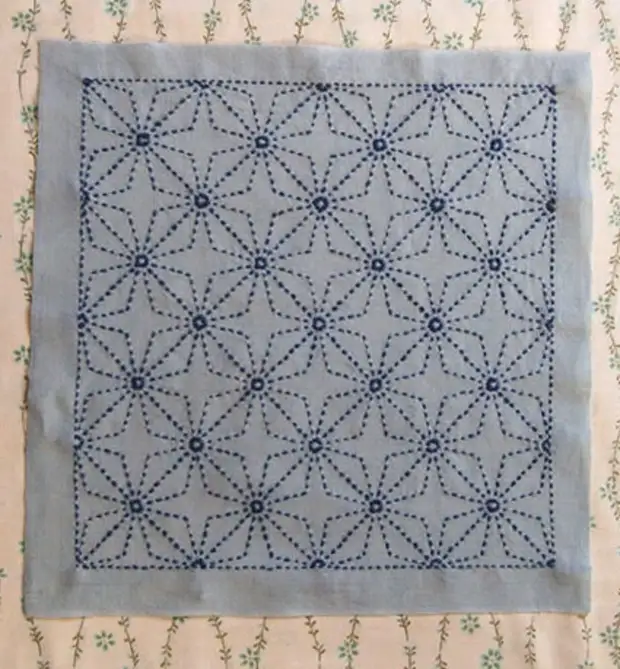
Moving further on the broken lines from one edge to another by analogy with the fact that it is described above, we complete the opposite corner of the entire circuit. In conclusion, follow the frame. It can be done by moving around the perimeter, the main thing is to ensure that the thread ended only at the corners.
Examples of patterns:
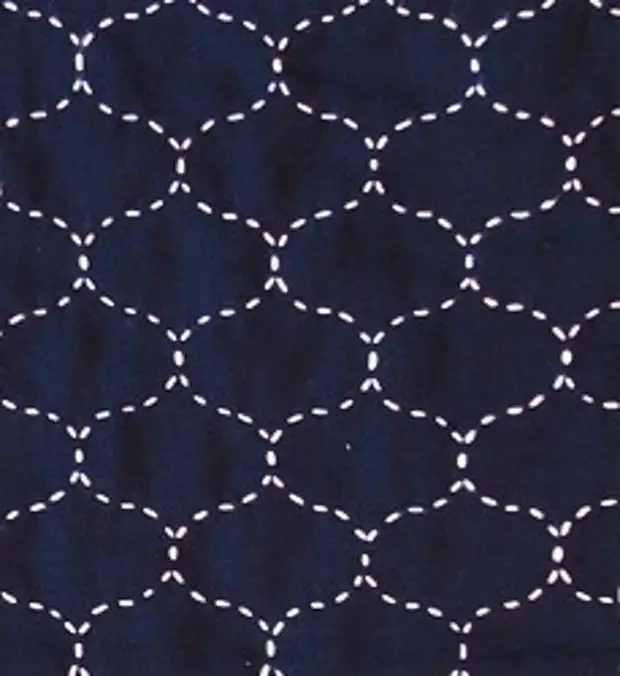
Amimon is a fishing network, promises a good catch.
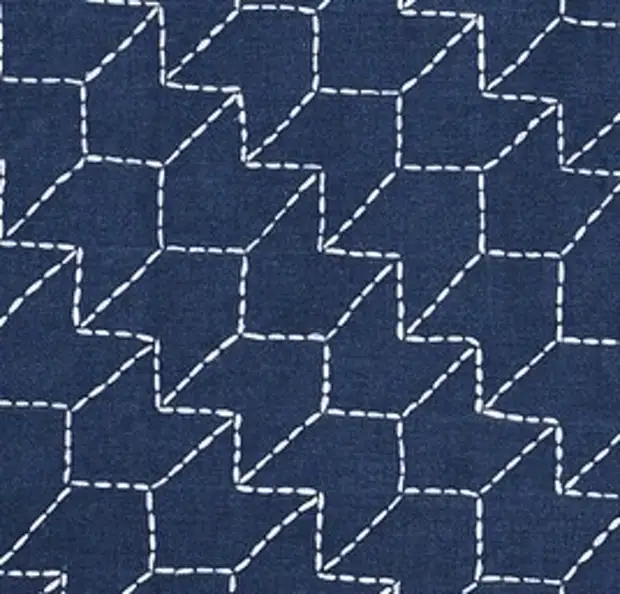
Yabane - arrows, warrior symbol.
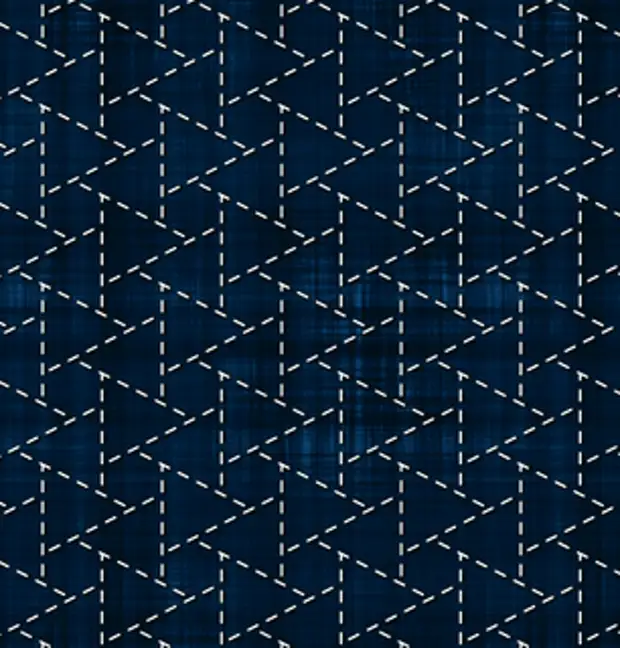
Musubi Kikko - Turtle shell, a happy number of three (triangle and hexagon) for longevity.
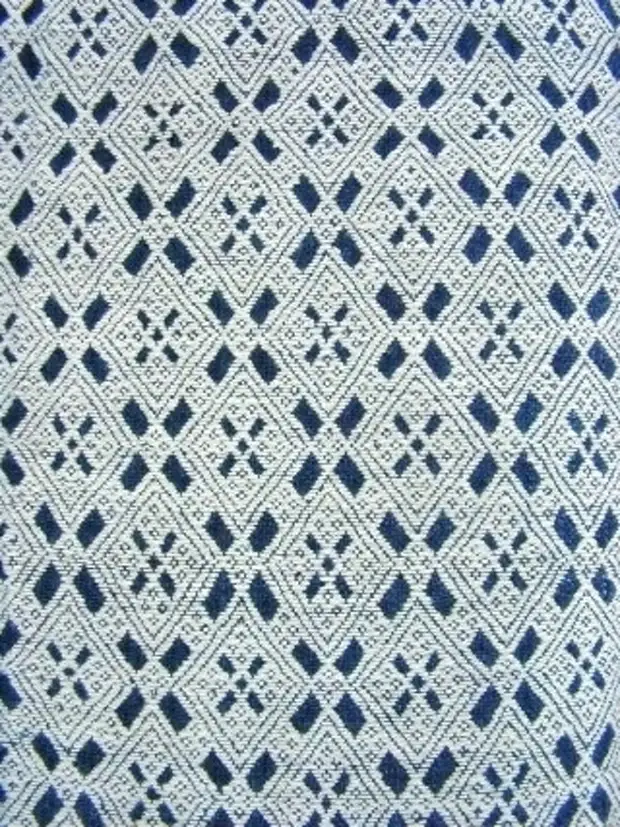
Kogin is the following type of embroidery that was used only on the Tsugaru Peninsula located on the northern part of Honshu Island. The poorest and most frozen plot of Japan. Apparently, therefore, cheap and fermented tissue decorated with such a complex pattern. The fabric was taken by the colors of Indigo, and the weave was uneven to get an elongated rhombus.
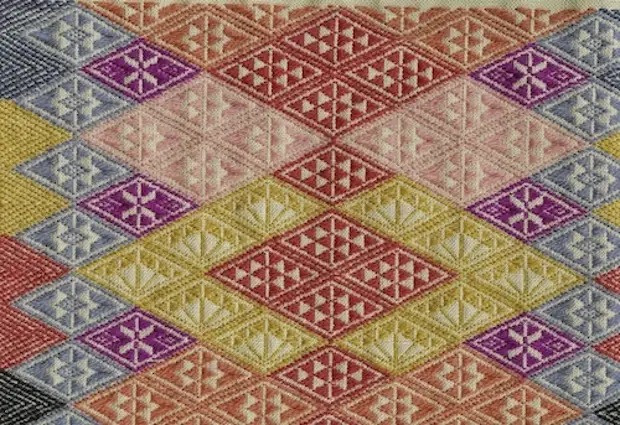
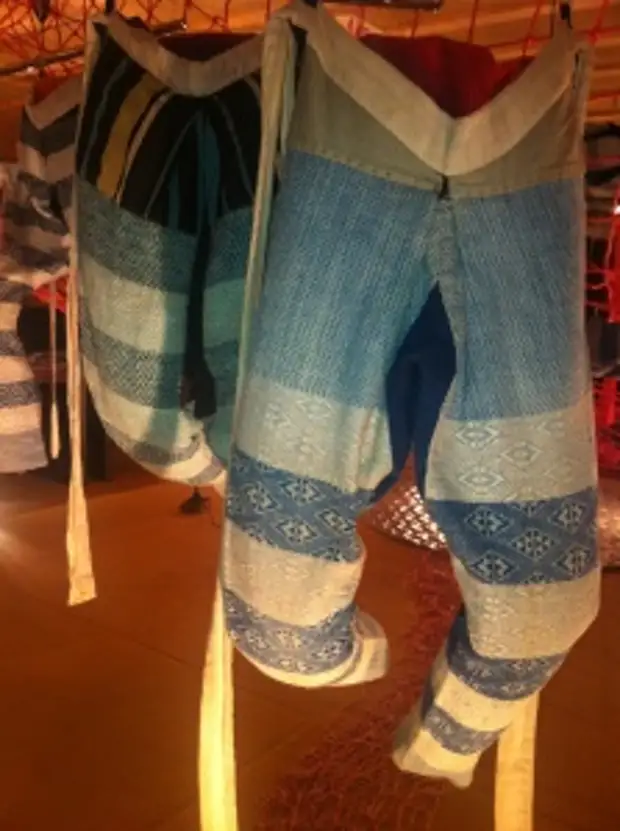
Hishizashi is a kind of Kogin, but the fabric took the brightest and very often in one embroidery used three or more colors of the threads. Originated in Nanbu in Aomori Prefecture.
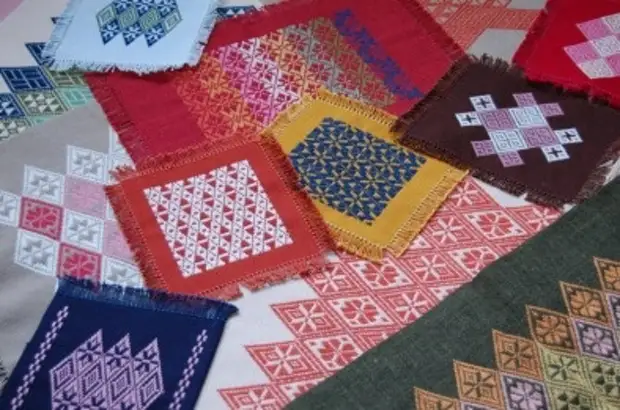
For a more memorable duct (assembly) of clothing in the Boro technique, such ways found such ways:
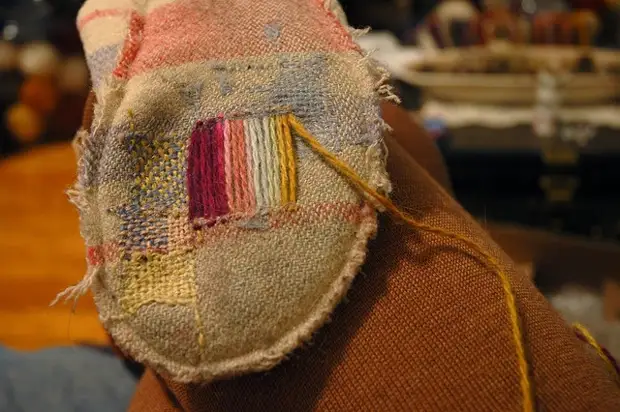
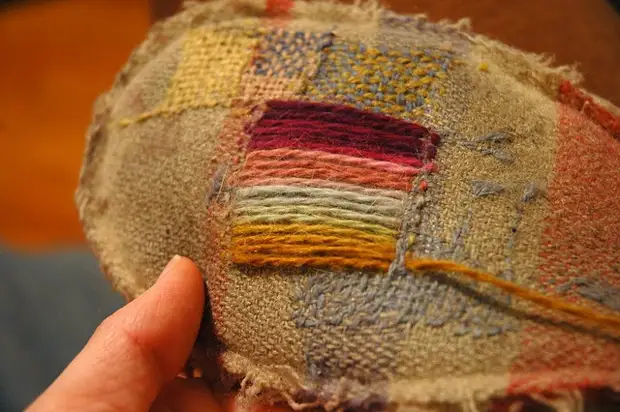
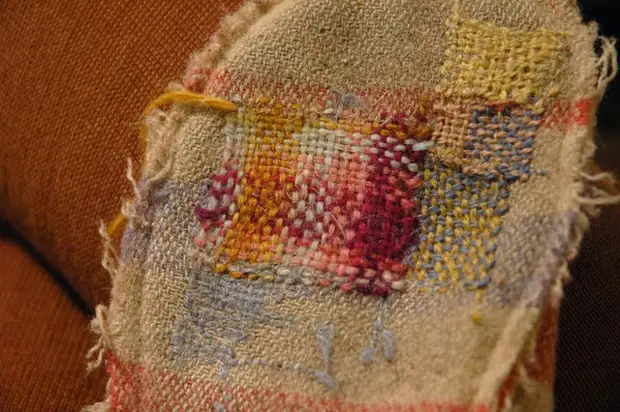
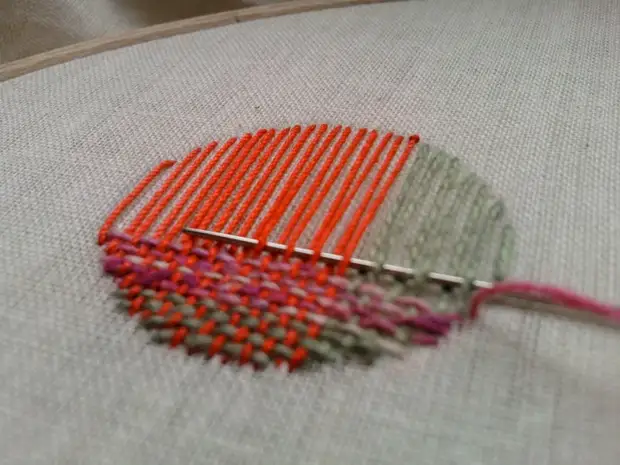
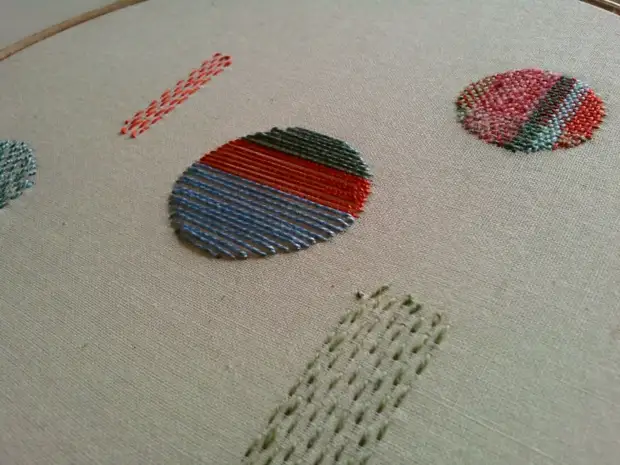
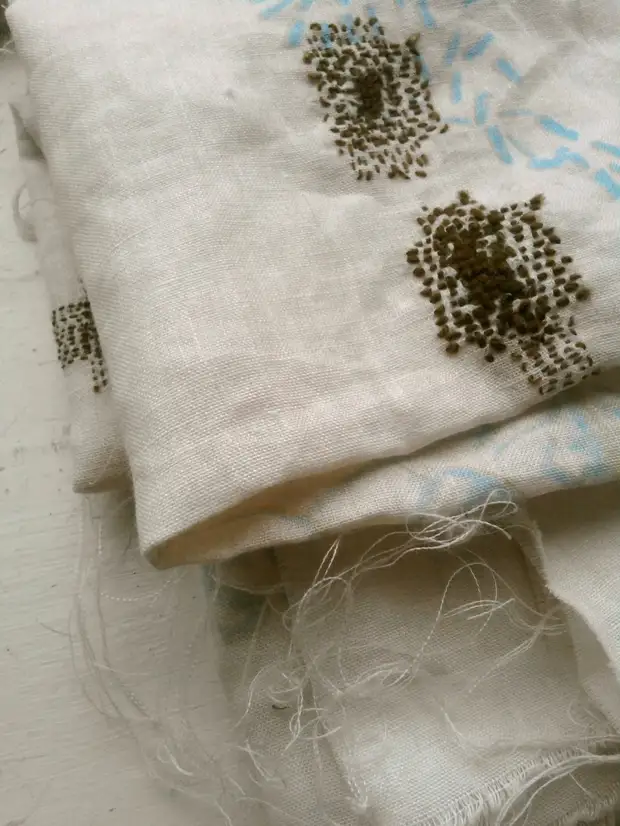
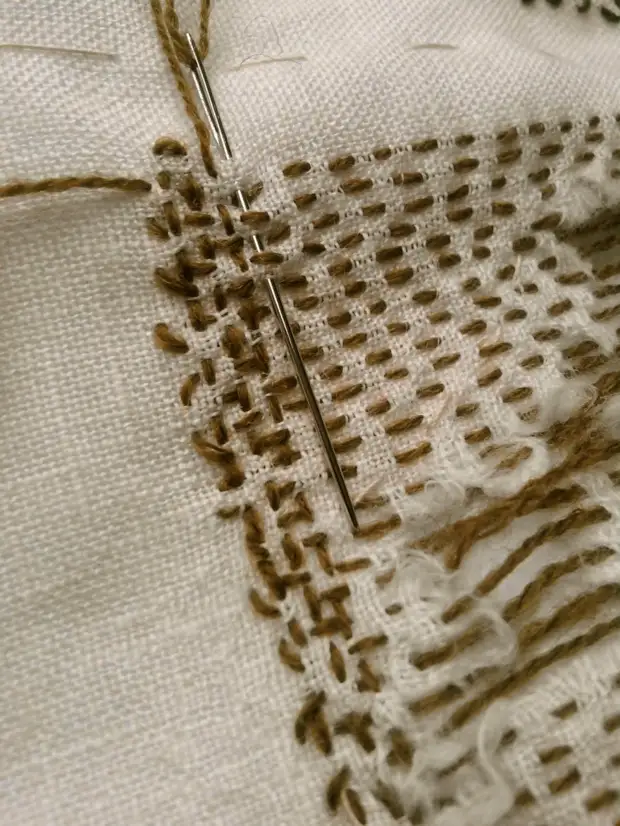
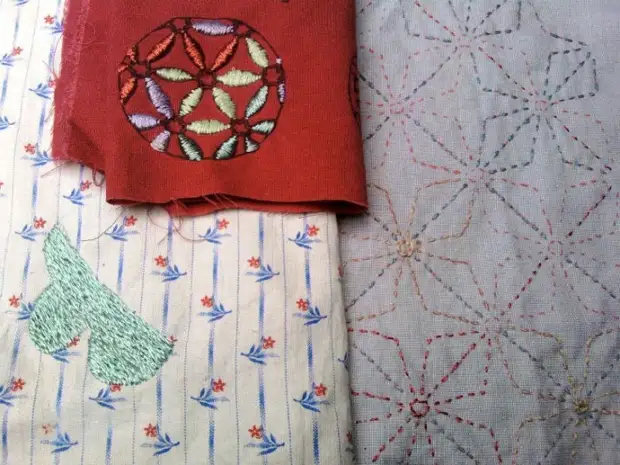
A source
To truly traditional, they are no longer attributed, but the texture they will give excellent.
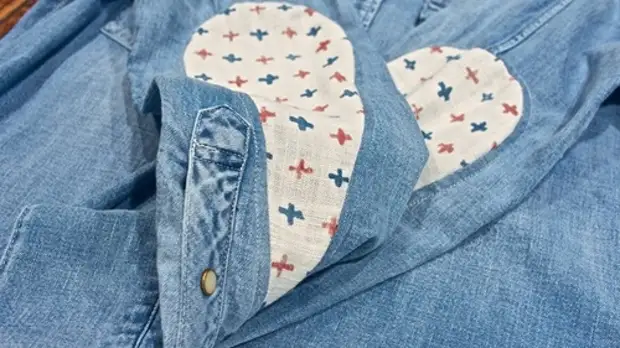
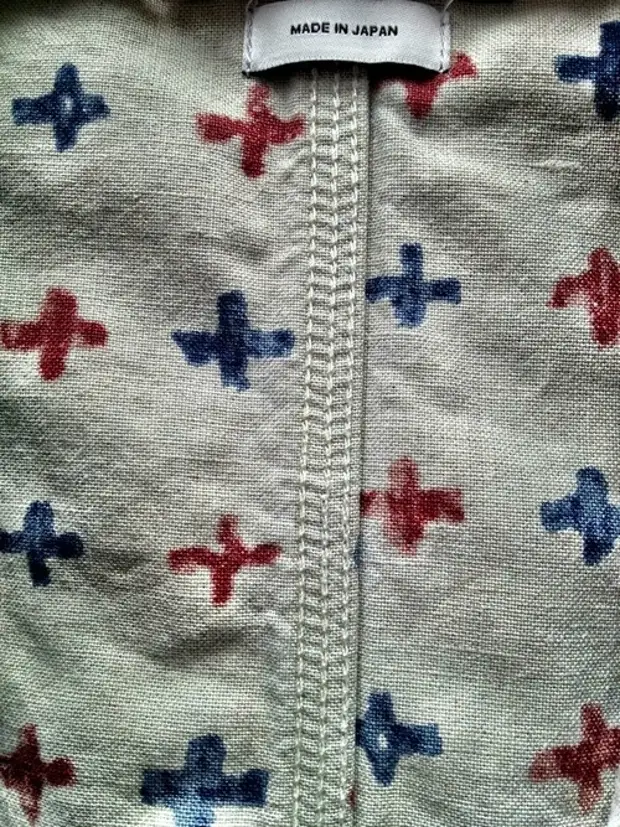
To facilitate the task, you can use patchwork from unbleached fabric with a pattern "Cross" - the most common view of the duct after parallel lines.
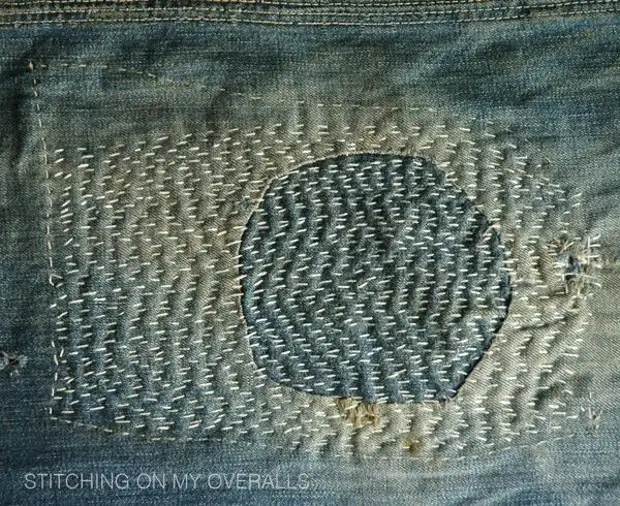
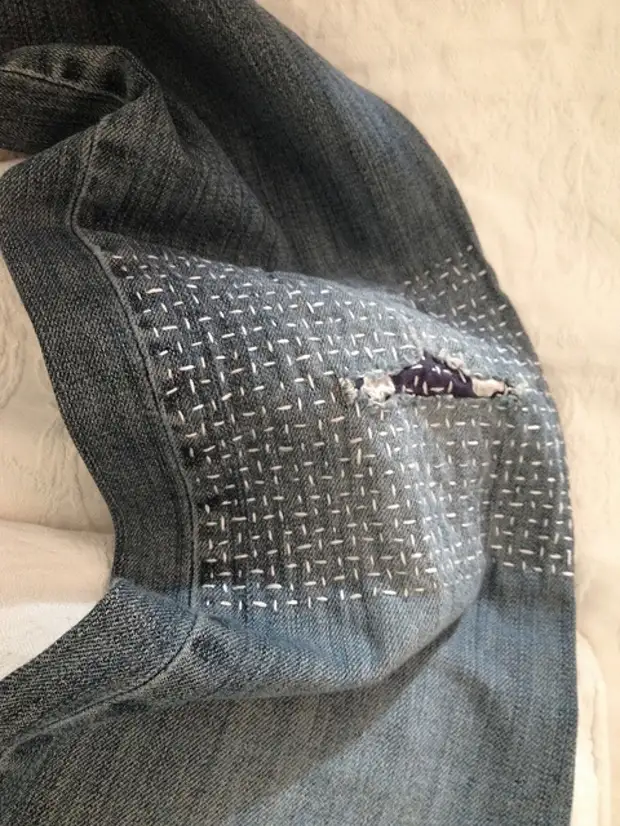
You can enhance your knees and elbows.
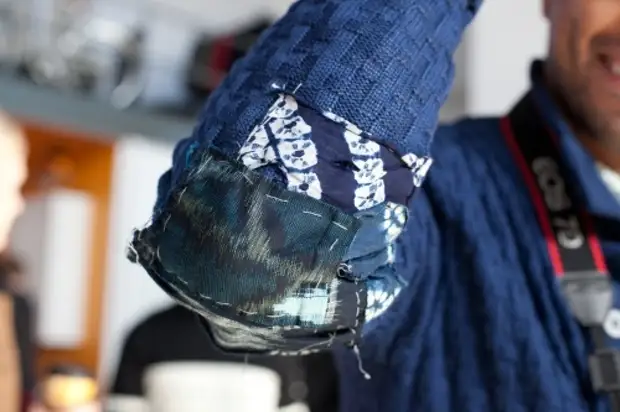
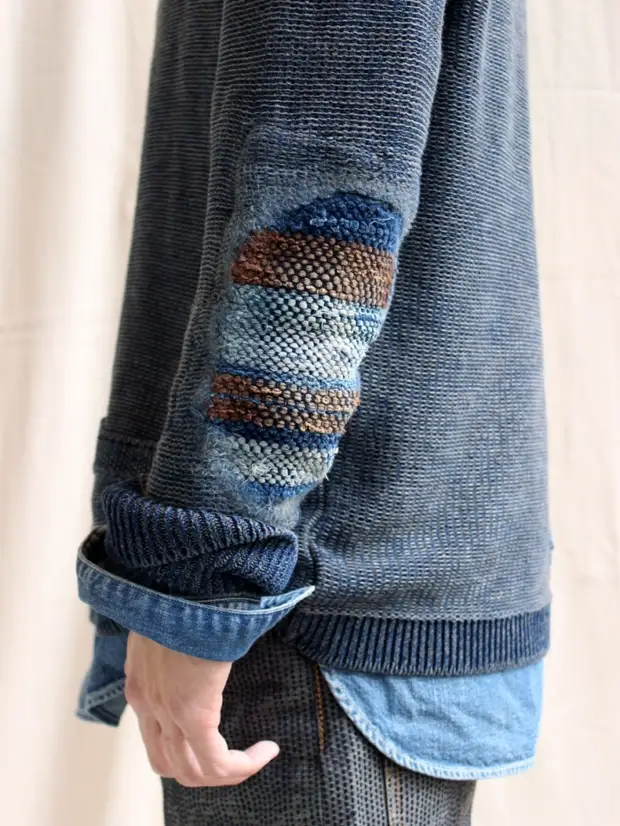
The sweater can be patched with tissue with traditional patterns or with an invoice similar to the duct.
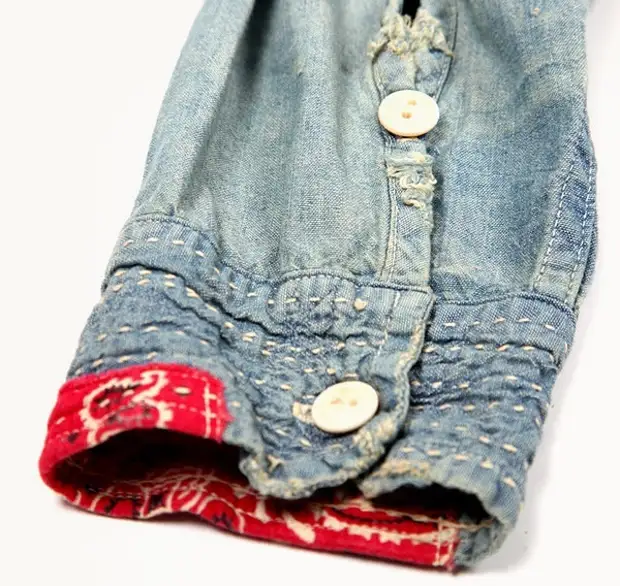
The disheveled cuff is also not a reason to throw a thing.
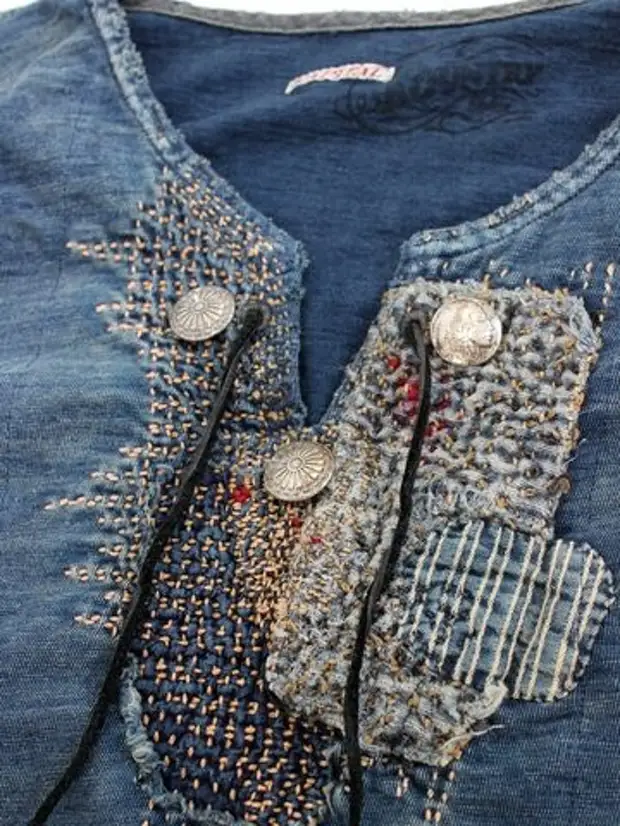
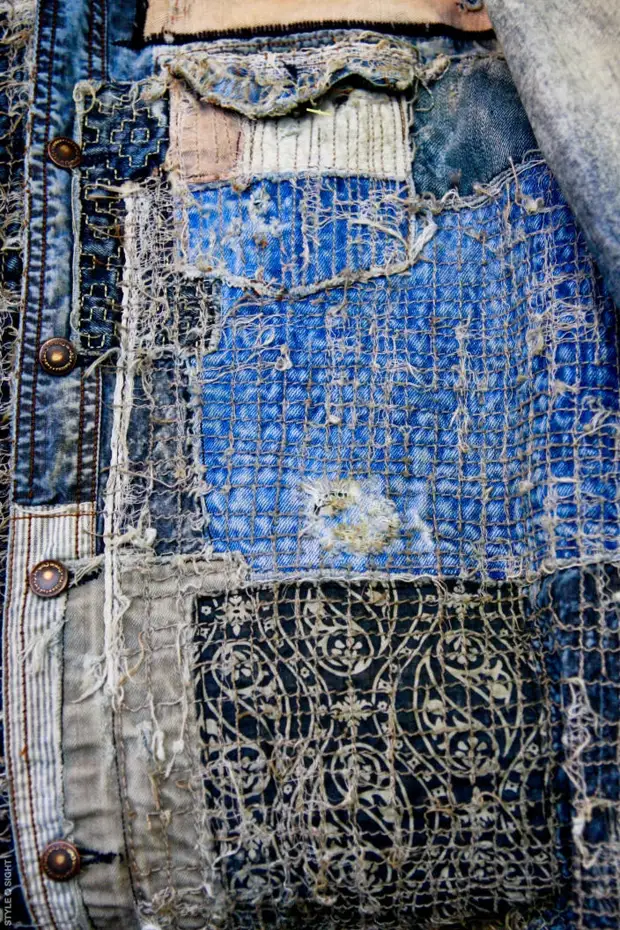
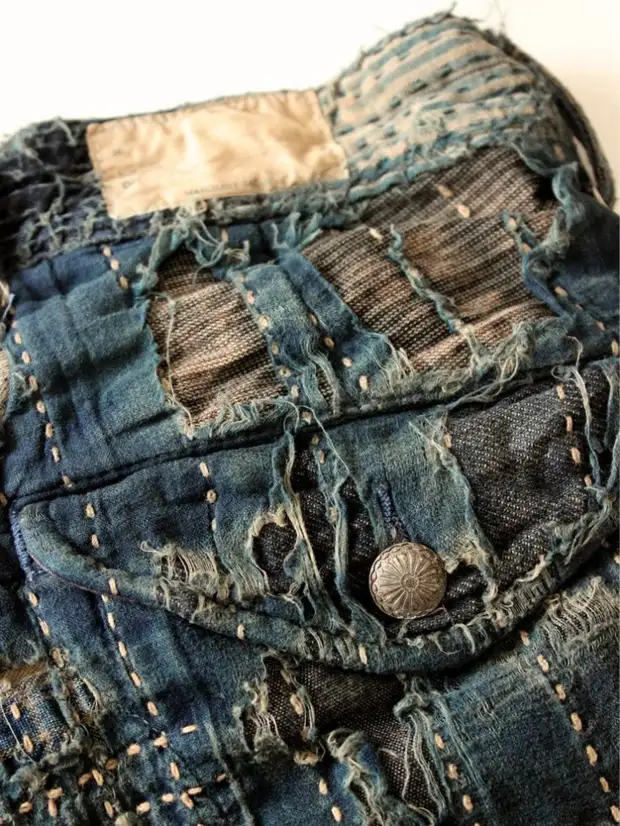
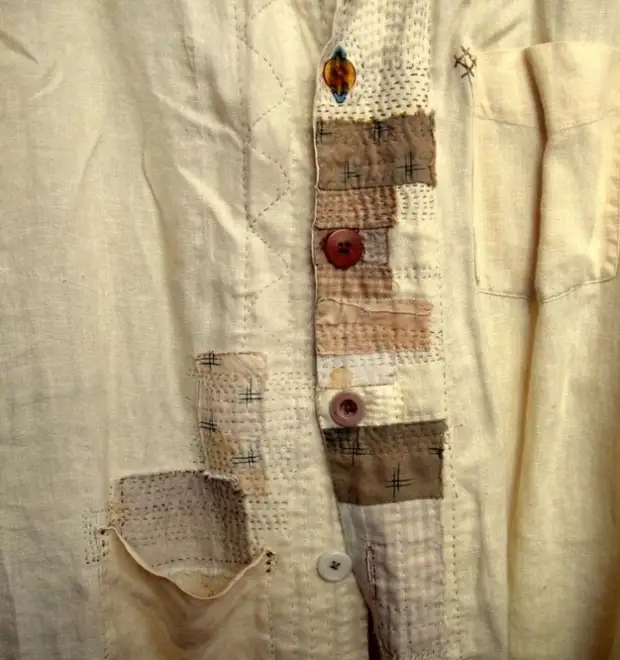
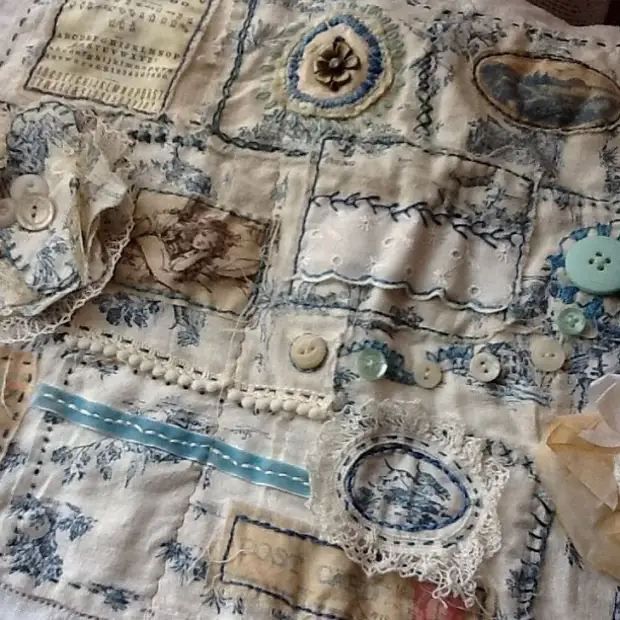
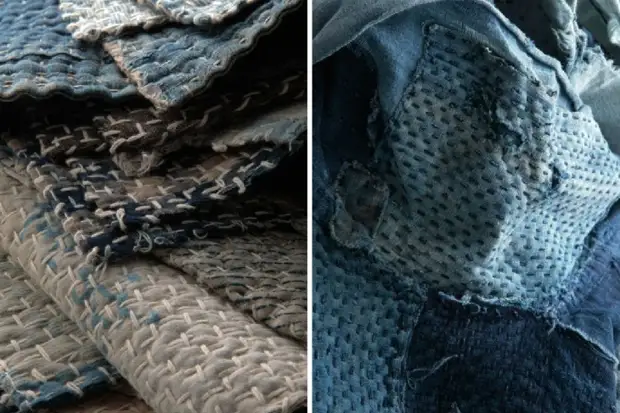
A source
